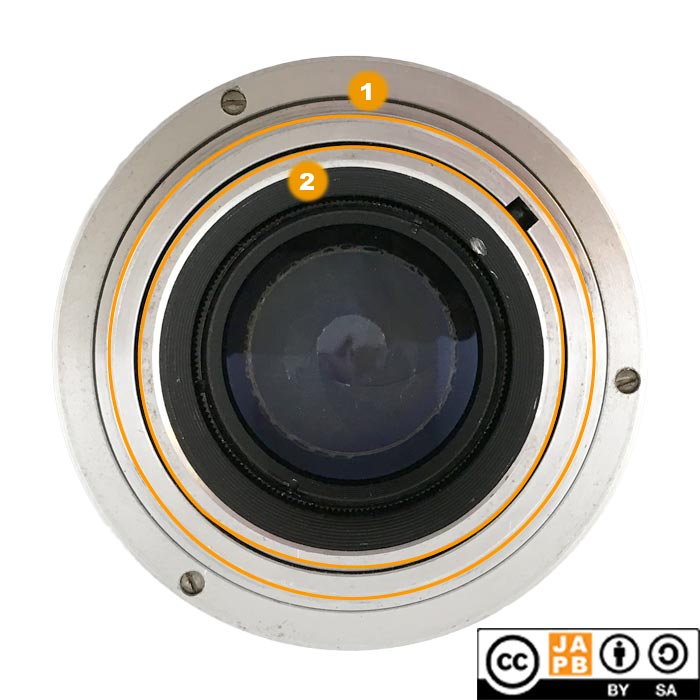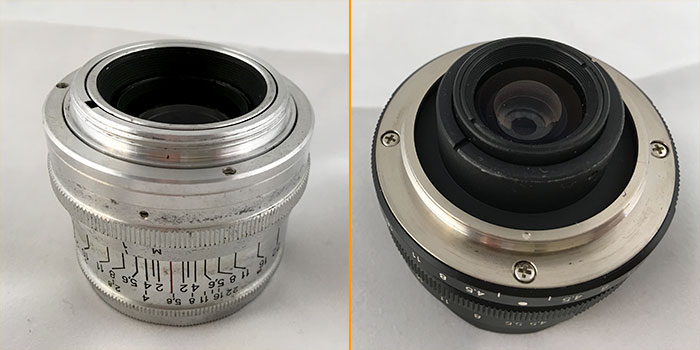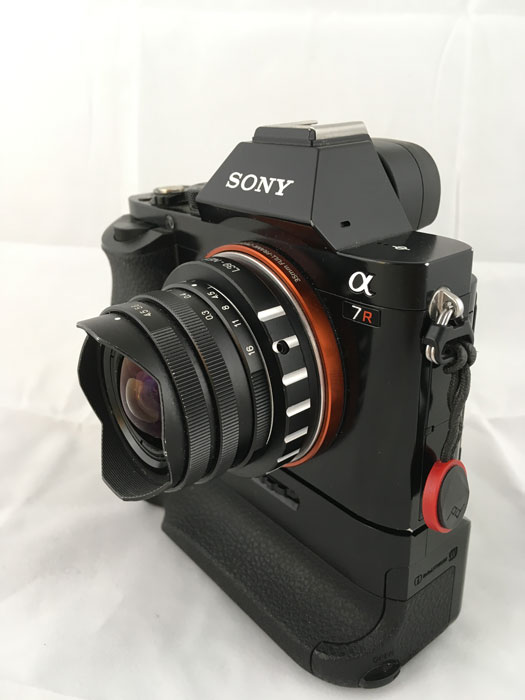Pekka Buttler (Updated 5/2025)
LTM mount specifications
Mount type: Thread-mount
Thread specifications: 39 mm diameter; 0,98 mm thread pitch.
Flange focal distance: 28,8 mm
Film format: 36mm x 24mm (‘Full frame’)
Mount communication: one cam to communicate focusing distance setting to camera (for setting the rangefinder)
Identifying the LTM mount

Characteristics of an LTM mount:
[1] 39 mm diameter threads
[2] Inner cam that moves forward/backward in tandem with focusing action.
Information on the LTM mount:
They say a dear child has many names, and the Leica thread mount (LTM) is also variously known as the Leica screw mount (LSM), m39, M39 and L39. Of these, JAPB prefers LTM, and recommends against m/M39 (as that opens the door to confusion).
If M42 is the quintessential general thread mount for SLR’s, the Leica thread mount is the original thread mount for rangefinder cameras. While the LTM mount has its origins in 1914, what we today know as the LTM was de-facto standardised in 1931. Ancient history to most of us, but still relevant today.
The standard LTM mount is a thread mount that has an outside diameter of 39 mm, a thread pitch of 26 turns per inch ( roughly 0.98/mm) and a 28,8 mm flange focal distance. The somewhat oddball thread pitch is based on Leica’s previous work with microscopes, and is one of the curiosities of what in essence is a century of photographic legacy.
While the LTM was used by Leica only until 1954 (after which Leica cameras use the Leica M-mount), a major part of the reason for the range of lenses available for the LTM is that the pre-war Leica III was copied (one should say, reverse-engineered) by many other manufacturers including Canon, FED and Zorki, and most of these were manufactured long after Leica had themselves stopped manufacturing LTM cameras and lenses.

Adapting LTM lenses
LTM lenses are simple thread mount lenses, that have neither communication pins nor levers. Given that LTM lenses are intended to be used on rangefinders (no through-the-lens viewing), aperture-related communication would be quite useless.
On the other hand, some (if not most) LTM lenses do communicate with the body, but nothing about the aperture. Instead they communicate the set focusing distance (information the rangefinder will need). This is however not done using pins or levers, but with a collar mounted inside the thread mount.
While the shortish flange focal distance makes them largely unattractive for adapting on SLR’s (except as overpriced and quirky macro lenses), LTM lenses have long been adapted to Leica M bodies. Incidentally, the fact that LTM lenses have been easily adapted to Leica M -bodies has kept the LTM mount attractive as third-party lens manufacturers have been able to reach a wider audience by manufacturing LTM lenses for use on either LTM or Leica M bodies.
With the advent of mirrorless digital cameras, a new world has been opened up for these lenses. Given the generally diminutive size of typical LTM lenses, these lenses are attractive to all those photographers who want to couple their smaller bodies with smaller lenses (especially as modern lenses tend to keep growing). On the other hand, LTM lenses are often so small that they can easily be dwarfed by the bodies they are mounted on.

That said, there are some things one should be aware of when mounting rangefinder lenses on modern mILC’s. Due to a combination of the short flange focal distance, how some lenses (especially ultra-wide angle lenses) tend to protrude into the lens mount, and the properties of digital sensors, many rangefinder lenses do not deliver as good results on mILC bodies as those film cameras they were originally designed for (something I touch upon here and here).